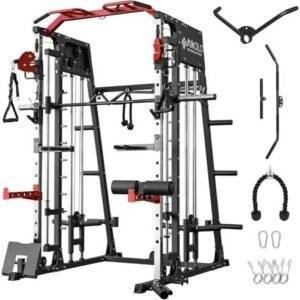In the ever-evolving landscape of healthcare, the imperative for enhanced operational efficiency has taken centre stage amid growing patient demands and fiscal constraints. As hospitals strive to deliver high-quality care while simultaneously managing costs, technology has emerged as a pivotal factor in optimizing workflows and streamlining processes. From electronic health records (EHR) and telemedicine platforms to advanced data analytics and artificial intelligence, the integration of sophisticated technological solutions is not merely a trend but a fundamental shift in operational strategy. This article delves into the various technologies reshaping hospital operations, examining their impact on resource management, patient care delivery, and overall institutional performance. By analyzing real-world implementations and outcomes, we aim to illuminate how hospitals can leverage these advancements to enhance efficiency and ultimately improve patient outcomes.
Table of Contents
- Assessing Current Technologies in Hospital Management Systems
- Integrating Telehealth Solutions for Improved Patient Care Coordination
- Implementing Data Analytics for Resource Optimization and Decision Support
- Harnessing Automation to Enhance Workflow and Reduce Administrative Burden
- Insights and Conclusions
Assessing Current Technologies in Hospital Management Systems
In an era where the efficiency of hospital operations is paramount, current technologies in Hospital Management Systems (HMS) are pivotal in addressing complex healthcare demands. These systems are designed to integrate various hospital functions, including patient information management, billing, and supply chain logistics, leading to streamlined workflows and enhanced communication among staff. Key elements of these technologies include:
- Electronic Health Records (EHR): Allow for real-time access to patient data, facilitating better decision-making and patient care.
- Telemedicine Solutions: Provide remote consultation capabilities, significantly improving access to healthcare services.
- Data Analytics Tools: Equip administrators with insights into operational inefficiencies and patient trends, promoting data-driven decision-making.
The integration of these technologies is not without its challenges, however. Hospitals must prioritize cybersecurity measures to protect sensitive patient data from breaches while ensuring compliance with regulations such as HIPAA. Additionally, the financial investment required for upgrading and training staff on new systems can be substantial. Below is a summary of the key benefits and challenges associated with the implementation of current HMS technologies:
| Benefits | Challenges |
|---|---|
| Increased operational efficiency | High initial costs |
| Enhanced patient experience | Data security concerns |
| Improved care coordination | Staff resistance to change |
Integrating Telehealth Solutions for Improved Patient Care Coordination
Telehealth solutions are revolutionizing patient care coordination by bridging the gap between patients and healthcare providers. By integrating these technologies into hospital operations, institutions can enhance communication and streamline workflows. The ability to conduct virtual appointments means that patients can access care from the comfort of their homes, which is particularly beneficial for those with mobility issues or living in remote areas. This approach not only reduces the burden on hospital facilities but also allows healthcare teams to monitor patients’ conditions in real time, facilitating timely interventions and reducing hospital readmission rates.
Moreover, the incorporation of telehealth systems enables a more holistic view of patient data, which is crucial for coordinated care. With centralized patient records accessible to multiple providers, interdisciplinary teams can collaborate more effectively. This results in the following benefits:
- Improved access to specialists for timely consultations.
- Enhanced patient engagement through interactive tools and reminders.
- Reduction in unnecessary visits by managing chronic conditions remotely.
- Streamlined billing processes through integrated payment systems.
| Benefit | Description |
|---|---|
| Real-time Monitoring | Continuous tracking of patient health metrics. |
| Increased Accessibility | Patients can consult providers without travel constraints. |
| Enhanced Follow-up Care | Post-discharge support through virtual visits. |
| Crisis Management | Immediate access to resources in emergency situations. |
Implementing Data Analytics for Resource Optimization and Decision Support
In the realm of healthcare, harnessing the power of data analytics can significantly enhance resource management and streamline operational decision-making. By employing sophisticated algorithms and analytics tools, hospitals can gain actionable insights from their data, leading to improved allocation of resources. Key focus areas include:
- Staffing Optimization: Data analytics helps hospitals predict patient inflow and adjust staff schedules accordingly.
- Supply Chain Efficiency: Tracking inventory levels and usage patterns ensures that medical supplies are always available without excess.
- Patient Flow Management: Analyzing patient wait times and throughput can lead to better scheduling and reduced bottlenecks.
Furthermore, implementing predictive analytics can facilitate proactive decision-making by anticipating future trends and challenges. For instance, hospitals can use historical data to forecast patient volume variations, allowing them to preemptively allocate resources. The following table illustrates some critical areas where predictive analytics can drive efficiencies:
| Analytics Focus | Benefit |
|---|---|
| Bed Utilization Rates | Maximizes patient readiness and reduces overnight stays. |
| Surgical Scheduling | Decreases cancellations and optimizes operating room time. |
| Emergency Department Triage | Improves patient handling during peak hours. |
Harnessing Automation to Enhance Workflow and Reduce Administrative Burden
In the fast-paced environment of healthcare, hospitals are turning to automation to alleviate the heavy administrative workload that often strains resources and personnel. By integrating intelligent automation systems, healthcare facilities can significantly reduce time-consuming tasks, allowing medical professionals to prioritize patient care over administrative duties. Automation can handle a variety of functions, including:
- Patient Scheduling: Automatically coordinating appointments to minimize no-show rates.
- Billing Processes: Streamlining invoicing and payment collection, thus enhancing revenue cycle management.
- Data Entry: Utilizing robotic process automation (RPA) to input and update patient records seamlessly.
- Inventory Management: Tracking supplies and medical equipment in real-time to prevent shortages and overstock.
Moreover, the implementation of automated workflows can enhance communication across departments, ensuring timely data sharing and collaborative decision-making. Utilizing electronic health records (EHR) with integrated notifications can reduce delays in patient treatment and enhance care coordination. Additionally, automated reporting tools can provide stakeholders with real-time insights into hospital performance. The following table provides an overview of automation benefits:
| Automation Feature | Benefit |
|---|---|
| Automated Alerts | Encourages timely patient interventions. |
| Digital Document Management | Improves access to critical information. |
| Remote Monitoring Tools | Enhances patient monitoring efficiency. |
| Predictive Analytics | Informs strategic planning and resource allocation. |
Insights and Conclusions
the integration of advanced technologies within hospital operations is not merely a trend; it represents a fundamental shift towards enhanced efficiency and patient care. From electronic health records (EHR) to artificial intelligence-driven decision support systems, these innovations are proving essential in streamlining workflows, reducing operational costs, and ultimately improving patient outcomes. As healthcare continues to evolve in an increasingly complex environment, the strategic adoption of technology will be critical. Hospitals that prioritize the optimization of their operational processes through technological solutions will not only gain a competitive edge but also ensure that they are adequately equipped to meet the demands of modern healthcare. Moving forward, it is imperative for healthcare leaders to stay abreast of emerging technologies and best practices to foster an adaptable and efficient organizational framework that aligns with the overarching goal of delivering superior patient care.




